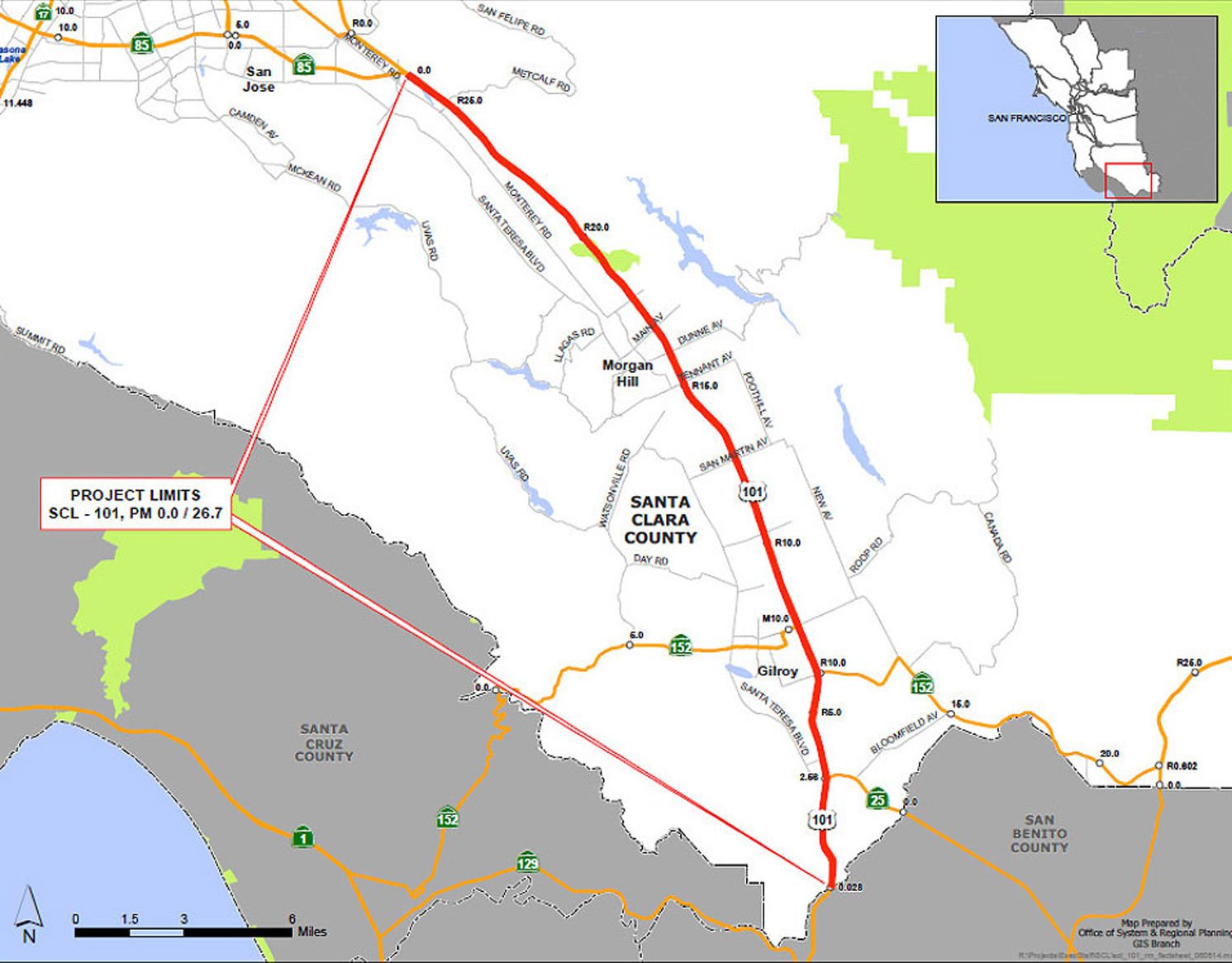
GILROY—Caltrans is inching towards completion of an $18 million project to add carpool lanes, meters and traffic surveillance cameras to U.S. 101 on-ramps in Gilroy, Morgan Hill and South San Jose.
Scheduled for completion by the fall, the project could help manage bottlenecks on the freeway during peak traffic hours, according to Caltrans District 4 Public Information Officer Bernard Walik.
The metering project encompasses widening 17 on-ramps from South San Jose at the U.S. 101/85 interchange south to the San Benito/Santa Clara County line.
“The (wider ramps) will enhance traffic flow on the freeway, decrease travel time and improve mobility through the corridor during peak hours,” Walik said.
Carpool lanes and meters were installed at the U.S. 101 on-ramps in Gilroy at Monterey Road, 10th Street, Leavesley Road and Masten Avenue. But local drivers should not expect to see that carpool lane flow into a similar lane on the freeway.
It’s Caltrans policy to install carpool lanes at all metered on-ramps regardless of whether one exists on the freeway. The policy helps high occupancy vehicles save time and bypass the regular traffic queued up behind the meters, Walik said.
The meters will not be turned on until the statewide transportation agency and the Valley Transportation Authority complete a traffic study that will help determine the rate at which cars enter the freeway, Walik said.
As part of the improvement plan, six closed-circuit traffic surveillance cameras will be added to U.S. 101 on-ramps along the corridor.
In Gilroy, a camera remotely controlled by operators in Caltrans’ traffic management center will be installed at the 10th Street on-ramp.
The cameras allow operators to check on-ramp incidents and monitor congestion. But Walik said the cameras, at a cost of approximately $190,000 each including installation, do not record audio and the footage is not stored.
“They are only used in real-time for incident and traffic management and are only monitored by traffic management center operators,” Walik said. “The cameras are off until there is a need to do a visual check of field conditions.”
While construction on Gilroy’s on-ramps is slated to finish as early as this summer, intermittent ramp closures may occur especially during the evening. Electronic signs will be posted on the freeway to alert drivers to on-ramp closures, Walik said.













